How to maintain and feed sourdough starter
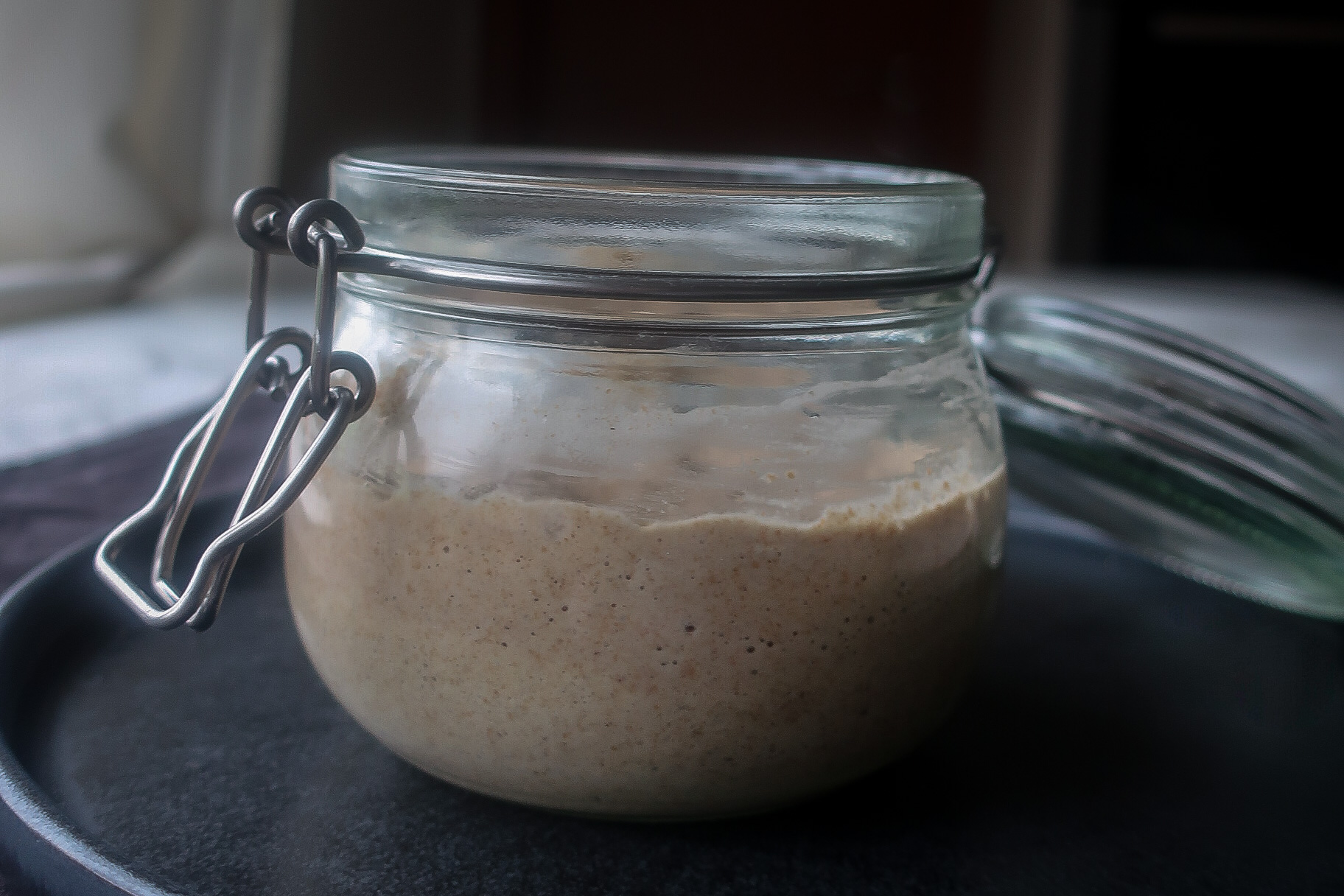
Learn the easiest way to keep sourdough starter. Without weighing, without constantly washing out the jars or any removal and discarding of the starter.
Having your own sourdough starter , whether home-grown or kindly gifted, is a big deal! It's like bringing a new pet to take care of, but you don't really know how yet... but after a few days or weeks, you'll find it's a breeze. We have to take care of the sourdough starter too, but it's actually much easier than you'd expect!
I often hear people say that maintaining a sourdough starter must be difficult and that you "have to throw it away" and I say DON'T and definitely don't do it! You just need to maintain your sourdough starter in this simple way and have plenty of delicious sourdough recipes to use it for! This method of maintaining sourdough is really easy and anyone can do it.
Here are some of my favorite sourdough recipes, if you're looking for some inspiration!
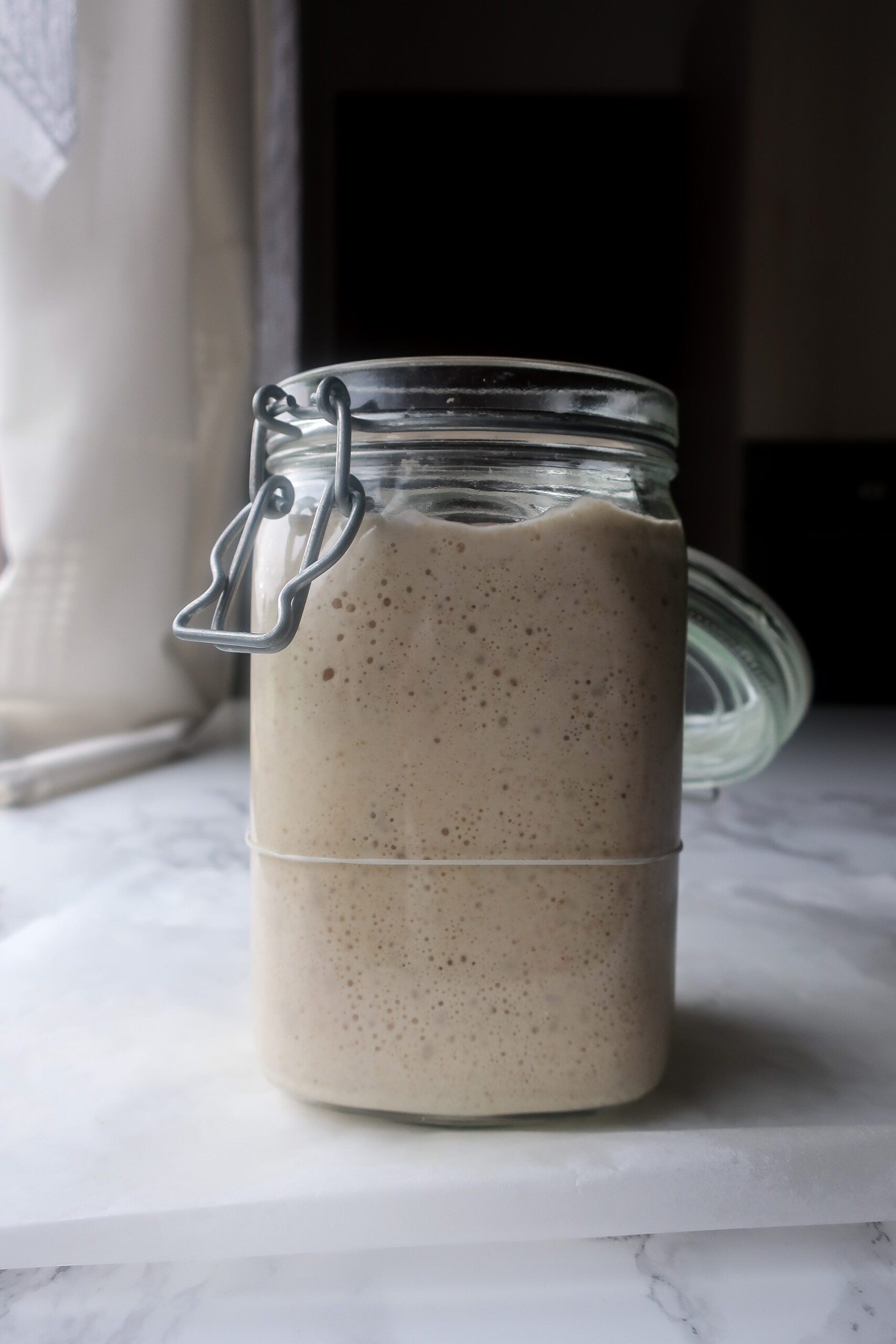
How to use sourdough starter?
This way of keeping the sourdough starter is perfect for wheat sourdough starter or gluten-free sourdough starters (e.g. buckwheat). However, I will only work with wheat sourdough starter and it doesn't matter if you use white wheat flour, spelt flour, whole wheat variants or a combination of both. I keep wheat sourdough because I don't just use it for regular wheat bread, I enjoy using it for so much more!
Moje využití kvásku se dá jednoduše shrnout do 4 kategorií:
- I take 1 tbsp to make a levain: I typically take 1 tbsp of sourdough starter and make it into a levain with whole wheat rye flour. I use it mainly for wheat-wheat breads or whole wheat breads.
- Ready-made wheat sourdough starter I use active sourdough starter (or not that much active) as a ready-made sourdough starter in dough where it has a leavening function. For this use, it is best to have the starter about 8-12 hours after feeding, when it is at its most active. I use it most often for wheat breads that are prepared in the evening and rise overnight, such as my buttery sourdough sandwich bread.
- Ready-made batter base : I use it as a kind of batter base that is leavened with baking soda or not leavened at all. The sourdough starter here therefore substitutes for the flour and liquid , and it's an ideal way to use up excess sourdough starter, as it's usually taken in large quantities. It can easily be used for any kind of batter and I use it most often for crepes and sourdough pancakes for breakfast.
- As a flavoring : Sourdough has its typical sour taste and can flavor any dough perfectly. Whether you're making yeast bread that needs a bit of depth or shortcrust pastry like for quiche. Sourdough can make these products taste extra special.
How to feed sourdough starter?
All you need to feed is flour and water and some basic knowledge about sourdough starter.
Depending on the amount of sourdough starter in the container, just add flour and water in a 1:1:1 ratio (sourdough:flour:water) . This will produce double the amount of sourdough starter. This means that if I have approximately 1 cm of sourdough starter in the container, I add 1 cm of flour and 1 cm of water and mix. That's it, you don't have to weigh anything.
Of course, this is just a general guide as each flour absorbs water differently, the best clue will be the consistency of the sourdough starter, which is similar to a thicker pancake batter. If you have a thinner sourdough starter, it may bubble up too soon and not have the strength to leaven the dough. If you have a thicker sourdough starter, it will have plenty of strength, but it will probably be harder to mix and of course the time to proof will be longer.
What is the difference between an active and inactive sourdough starter?
When we feed the sourdough starter, the bacteria in it start to form CO2 and thus bubbles are formed and it becomes active (don't expect deeper chemical explanation from me). And so we can see that the volume of the starter keeps increasing and bubbling until it reaches its maximum, when it has its highest activity. Then the bacteria have nothing to eat and start to "be hungry". The level of the starter decreases, the bubbles slowly disappear and the starter becomes inactive, and will continue to do so until it is fed again. If you take out some inactive starter before feeding, you end up with sourdough discard.
The ideal time to use sourdough starter is when it is at its most activity, i.e. when it is most bubbly and at the highest peak. This way it has the most strength to leaven the dough. This is also why in some recipes a levain is especially made separately. This makes it easier to watch and control the timing of when it reaches its peak.
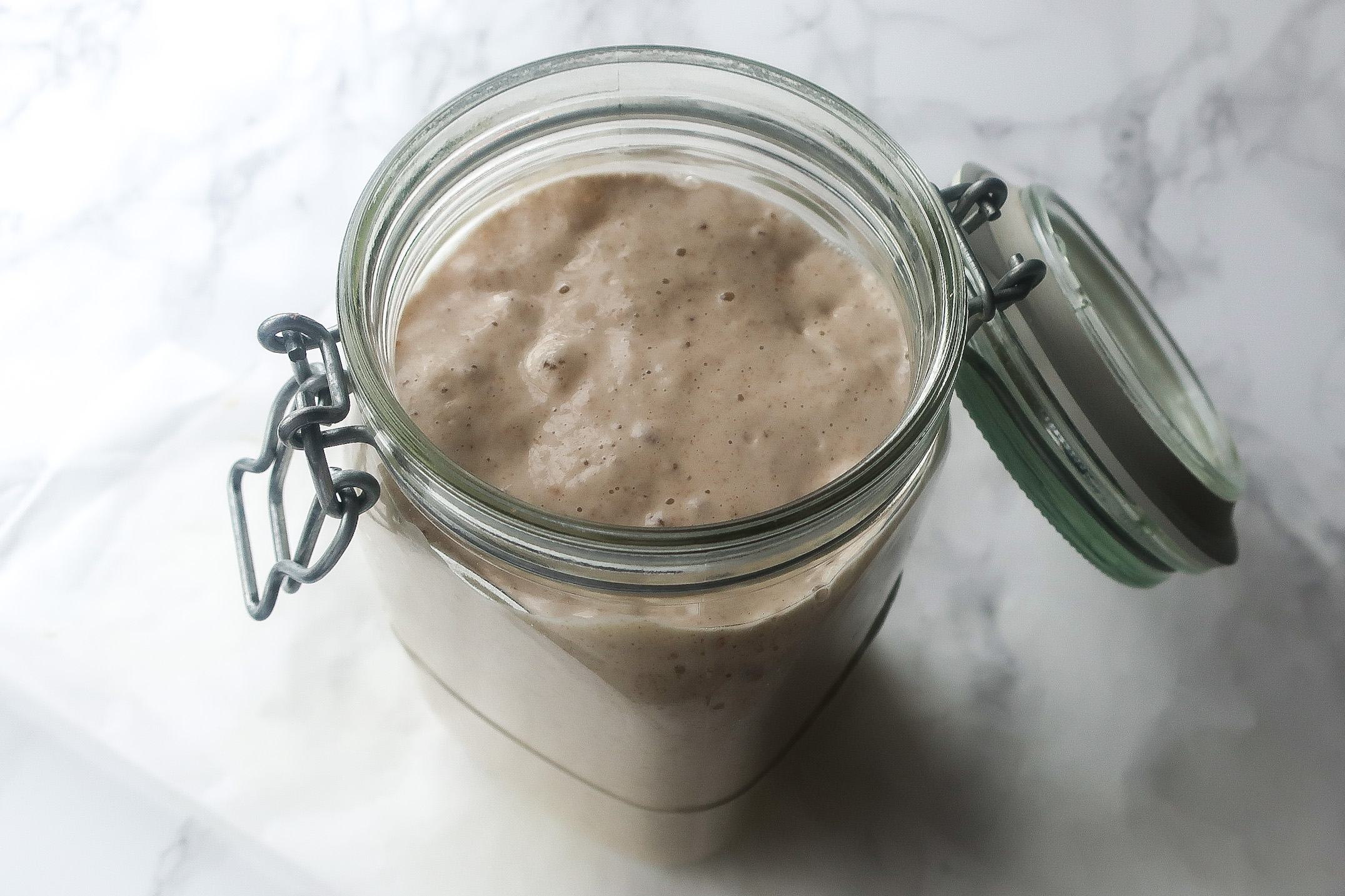
What most affects the fermentation process?
The fermentation process is mainly affected by the temperature of the environment. That is why we need to feed the sourdough starter on a counter at room temperature more often than if stored in the fridge, at least once every 12-24 hours.
To slow down the fermentation process, just put the starter in a cold room or in the fridge, where it will wait until you need it again. However, even if the sourdough starter is kept in the fridge, it is a good idea to feed it at least once every 3-5 days.
How to store sourdough starter?
I have found it most useful to store my sourdough starter in a taller container with a well-sealing lid. I use a 1,6 l container. Store the sourdough starter in a clean environment, either on the counter with the lid slightly open or in the fridge with the lid sealed. The great thing is that the sourdough starter can be taken out of the fridge to a warmer environment and back again as required.
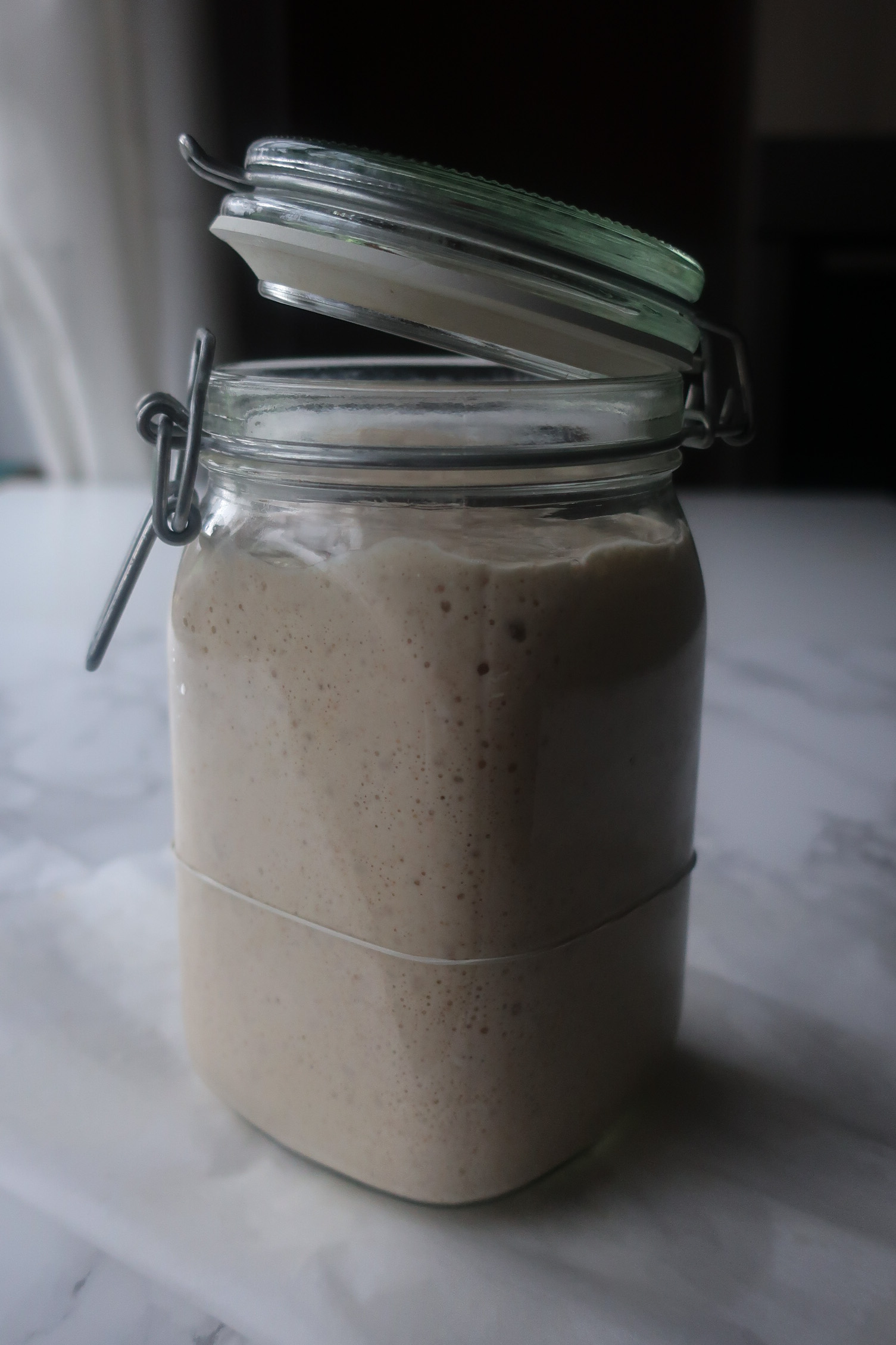
How I use sourdough starter during the week for illustration:
- Sunday evening - on Monday I want to bake bread, I scoop out 1 tbsp of sourdough starter and make a rye levain (75 g flour + 75 g water), I have about 2 cm of sourdough starter left in the container and put it back in the fridge
- Monday morning - I make the dough with rye levain and bake rye sandwich bread
- Monday evening - for Tuesday breakfast I plan to make sourdough pancakes, take the sourdough starter out of the fridge (I have 2 cm of it in there), feed it to have an estimated minimum of 1 cup of sourdough starter (0.5 cup of flour + 0.5 cup of water), let it ferment on the counter overnight
- Tuesday morning - I take 240 g of sourdough starter for my sourdough pancakes, make pancakes and I have about 1-2 cm of sourdough starter left in the container, add an estimated 1 cm of flour and 1 cm of water, stir and leave to ferment on the counter, as I plan to rye levain in the evening
- Wednesday morning - I did not manage to prepare the rye levain for bread in the evening, but the sourdough starter is still bubbling and so I makeSeeded bread, using 140 g of sourdough starter, the rest of the sourdough starter I put in the fridge
- Friday morning - I want to make sourdough crepes for the dinner, I'll feed the sourdough starter so I have at least a cup of sourdough starter, I'll leave it on the counter to ferment during the day
- Friday evening - I make sourdough crepes, next I'm going to make rye levain for 2 wheat-rye sourdough breads - I'm going to take 2 tbsp of sourdough starter and mix it in a bowl with 140 g of rye flour and 140 g of water), I'm going to put the rest of the sourdough starter in the fridge
- Saturday morning - I prepare the dough for two wheat-rye sourdough breads, one I left to rise on the counter and bake it in the afternoon, the other bread will rise in the fridge
- Monday morning - I bake the second bread
TIPS:
- some say that the sourdough starter should not come into contact with metal , so it is better to mix it with a wooden spoon
- once in a while it is also great to take out as much sourdough starter as possible so that the container is just "a little bit dirty". Add a few tablespoons of flour and water and leave on the counter to ferment. This gets rid of more of the older flour, so you end up only with a "young" sourdough starter.
- Are you still just thinking about how to start a sourdough starter?
Read this article! I'll walk you through the whole making your own sourdough starter process step by step!

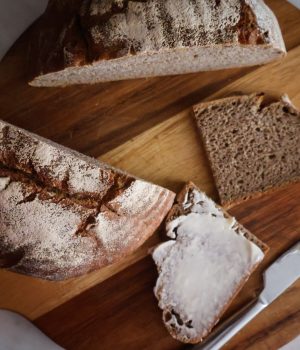
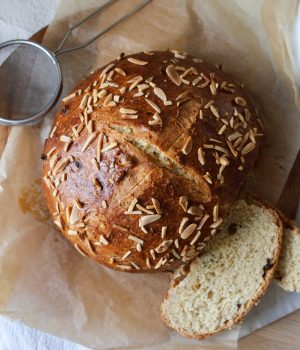

Dobrý den Raduško , prosím Vás o radu.
Chtěla bych po prvé péct chléb. Kvásek si už pěstuji delší dobu, takže už ho mám dostatečné množství na cokoliv. Potřebovala bych ho tedy spotřebovat větší množství na žitný chléb. Tedy abych si nemusela dělat rozkvas. Kolik kvásku mám použít na 1kg žitné mouky. Mám jak žitnou chlebovou, tak i žitnou celozrnou.
Chtěla bych si těsto připravit večer, nechat ho přes noc nechat kynout v lednici a ráno upéci. Děkuji za radu a odpověď. Zdravím z České Kanady,okres Jindřichův Hradec. A.M.
Dobrý den, na 1 kg mouky bych použila 300-400 g kvasu. Kynutí v lednici je potřeba vychytat. Rychlost kynutí hodně závisí od hydratace těsta (tedy jak je těsto husté), hustá těsta mohou v ledničce kynout klidně 2-4 dny. Chce to zkoušet a najít si ten „pravý“ recept. 🙂 Přeji hodně zdarů!
Dobrý den, teprve začínám, tak se radši zeptám. Udělala jsem podle vašeho nàvodu pšeničný kvas,upekla chléb a zbytek dala do lednice. Myslela jsem,že vydrží déle,ale už je snědený 😃 takže bych potřebovala rychleji nový. Dnes je to třetí den,co mám zbytek kvasu v lednici. Odebrala jsem 175 g jako rozkvas a všimla si,že již vzniká trošičku tekutiny. Měla jsem v plánu,že uvedený rozkvas nechám chvíli v teple (cca 2 hodky), pak přidám dle vašeho receptu zbytek ingrediencí na pšeničný kváskový chléb, nechám 4-5 hodin kynout,vytvořím bochník, pak ještě 2-3 hoďky a upeču. Myslíte,že mà šanci to dopadnout dobře,když jakoby přeskočím to noční rozkvasováni? 😃 Děkuji
Hezký den, jsem mc ráda, že se vám povedlo založit kvas a chléb se vydařil. 🙂 Pokud nemáte hezky nabublaný aktivní kvas, tak nebude mít tolik síly utáhnout tužší těsta. Mě se ale docela dobře osvědčil takový kvas při zadělávání řídších těst jako na Semínkovou cihlu nebo Chléb s ovesnými vločkami. Těsto potřebuje trochu větší teplo na kynutí a trochu více času, ale fungovat by to mělo dobře. 🙂
Dobrý den, mám dotaz. Přeučila jsem si nedávno žitný kvásek na špaldový, krmim moukou hladkou, celozrnnou, chlebovou i jejich kombinací. Uchovávám ho v lednici. Chová se ale divně. Bezprostředně po nakrmení se na povrchu začne tvořit tekutina, kterou vylívám a on se pak většinou rozjede, není ale nijak zvlášť výkonný. Kysne, ale moc se nezvedá. Teď zrovna zkouším totální omlazení z „výškrabku“ a celozrnné mouky, mám ho nechaný v pokojové teplotě, a stejně se tam ta voda zase sráží. Paralelně pěstovaný žitný mi toto nikdy nedělal. Nevíte, čím to může být? Děkuji
Dobrý den, pšeničný kvas se chová trochu jinak než žitný. Voda na hladině je u pšeničného kvasu běžná ale až po několika dnech, kdy je kvas hladový. Vyzkoušela bych krmit kvas dvakrát denně a pokud by ani to nepomohlo, tak zkusit jinou značku mouky. 🙂
Dobrý den chtěla bych se zeptat, jsem začátečník. Kvásek mám darovaný žitný 4-letý. Zatím chci péct chleba 1x týdně. Kvásek mám v lednici. Když budu chtít péct a udělat si rozkvas, je lepší mít den předem nebo ten den třeba ráno nakrmený kvásek a z toho udělat rozkvas a nebo kdykoliv z lednice můžu vzít dané množství kvásku na rozkvas??
Hezký den, do rozkvasu dávám 1 lžíci přímo z lednice. Pokud mám v lednici aktivní kvas, můžu použít i ten. Někdy jej udělám hustší a tak vydrží v lednici aktivní cca 1-2 dny, takže to je také možnost.